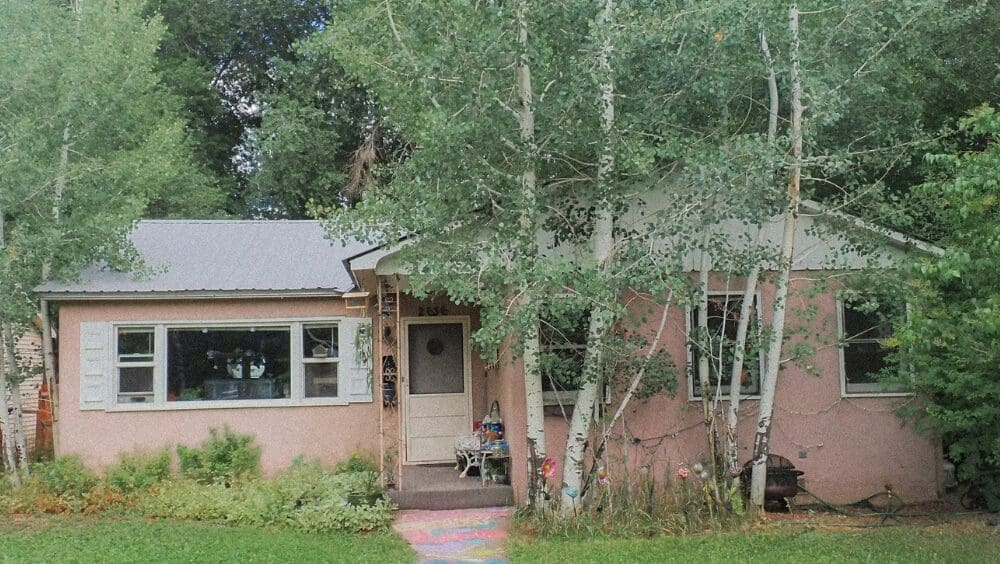
Disclaimer: This post is meant to be used for educational purposes only and does not constitute legal or financial advice. If you are considering a real estate investment in Texas, HomeLight always recommends doing your own research to determine which investment option is best for your situation. If you’re looking to invest in Texas real estate, the present conditions could be in your favor. While the real estate market in Texas was red hot in 2020 and 2021, the market has been shifting. According to the Texas Real Estate Research Center (TRERC), homes are sitting on the market longer, and sales are slowing. A recent TRERC Texas Housing Insight report states: “Up to November, total sales for homes priced below $300K plummeted close to 30 percent in 2022, while total sales grew 15 percent for homes priced between $400K and $500K. The sales disparity between these two groups could suggest that rising rates sidelined more homebuyers in the lower-middle class than upper-middle class.” At the same time, the state’s median home price remained 6.1% higher than year-ago. Dallas had the highest growth of 9.6%, while the growth rate in Austin fell to 0.1%, according to TRERC. What does this market environment mean for Texas investors? And how can investors maximize their potential earnings within the Lone Star State? In order to get to the heart of the real estate market in Texas, we spoke with Melissa Orr, a top real estate agent in Victoria, Texas, who works with over 80% more single-family homes than the average agent in her region. Years of experience networking with investors give Orr a unique perspective both on what qualifies as a hot investment market and a good investment property in Texas. Before we dive into specific Texas investment markets, it’s worth noting a few things that optimize an area for investment in general. Orr says it’s important to evaluate the city as a whole first. “Look at how the schools are doing in that market. How is the health of that city? How are they growing? What are they doing [for jobs]? And then also, are there any restrictions?” As you’re looking into investment locations, keep the following factors in mind. A great property at a great price is nothing if it’s not in a great area. Savvy investors spend time researching the location of the property, paying special attention to features that would make it desirable to renters or buyers. Many know that Texas is one of the hottest vacation spots in the country. With 3,359 miles of coastline, varied cultural experiences, and plenty of natural parks, Texas logged record-breaking travel economy data in 2022. That’s great news for the short-term rental market. In addition, the influx of people choosing to call Texas “home” continues to rise. Nationwide moving data shows that Texas is the number two destination for folks relocating from other states. That’s great news for the long-term rental and fix-and-flip markets. As you’re researching a local market within the state, consider what makes that area particularly attractive. Is there something –– such as a university, industry, or natural feature –– that will continue to draw tourists, renters, or buyers to that area? According to Forbes, Texas is one of the top states for economic growth in recent years. “Texas ranks fourth for current economic climate and first for its growth prospects, thanks to strong employment and income growth forecasts for the next five years. In addition, there are over 100 of the 1,000 largest public and private companies in the U.S. based in Texas.” A growing economy usually indicates a stable, appreciating real estate market. At a local level, investors should take note of large businesses with a solid track record in the area, as well as any new businesses intending to move into the location. Both are great indicators of consistent residential needs. Population growth is good for investors because it means the area will continue to demonstrate a strong demand for housing. Currently, Texas is the second most populated state, with over 29 million residents. The state of Texas is expected to continue to grow, with analysts projecting over 40 million residents by 2040. Of course, investors will want to dial that number in closer to their intended city or county. To research historical and projected population growth in any given area, consider searching U.S. Census data as well as this county-by-county data. Since cash flow is directly related to rental income, investors should always look into an area’s average rental rates. Investors can expect the following rental rates, on average in Texas: However, within the state, rental rates vary significantly by location. The average rent for a 1-bedroom residence in Red River County is $557, while in Williamson County, it’s $1,212. Even within the same county, factors such as waterfront access and community amenities create variable rent prices that investors will need to look into by neighborhood, specifically. In addition to data, investors should also choose an area for how it can generally help advance their personal goals. For example, some investors have no interest in management and maintenance; they may therefore want to choose an area based more on long-term appreciation than on cash flow. Other investors prefer a hands-on approach to real estate; they would thus want to choose property that’s within driving distance of their permanent residence. Orr recommends that investors consider an area with strong multi-family prospects. “Multi-family is a great way to get started, and here’s why: If you purchase a duplex, you can live in one side, rent the other, and qualify for an FHA loan.” Since not all locations are zoned for multi-family, that goal would need to be considered among other priorities. With those factors in mind, let’s check out some of Texas’s top individual markets. We’ll take a look at some desirable local factors, as well as median home prices with data from Realtor.com, average 2-bedroom rental rates from RentData.org, and population size data from Texas Demographics. With a thriving economy rooted in energy, aerospace, and manufacturing, Houston is one of the best places to consider a real estate investment in Texas. Houston is currently the fourth largest city in the nation, with steady annual growth of around 2% historically and similar numbers anticipated into the future. As the metro area of Houston ages, there’s a great potential for flipping, and nearby Galveston represents a wonderful opportunity for short-term vacation rentals. And take note of that great average rental rate –– when analyzed with the median price point, the cash-on-cash return in Houston looks promising! Median home price: $349,900Average rental rate: $1,307Population size: 2,288,250 The capital city of Austin is home to a hip cultural scene of live music, trendy food, and outdoor activities. Data indicates that Austin is the second fastest-growing city in the nation, and The University of Texas drives a continual demand for rental properties. Don’t be deterred by the high median home price; multi-million dollar homes on the northwest side of the city drive up the price data, but there are great deals to be found in the city center and southward. Orr also recommends nearby San Marcus for those who prefer to be a little outside the city. Median home price: $625,000Average rental rate: $955Population size: 964,177 Waco has been named one of the top ten emerging housing markets, and for good reason –– this small town packs in big benefits. Waco job-producers include Amazon, SpaceX, and Baylor University, among others. Appreciation over the last five years has been an impressive 75%, making it a great choice for buy-and-hold investors. And the popularity of Chip and Joanna Gaines’ Magnolia network draws tourists who would simply love to stay in a “fixer-upper” style cottage for vacation. Median home price: $265,000Average rental rate: $996Population size: 139,594 Home to Texas A&M University, College Station represents a good opportunity for investors in the middle of the Texas Triangle. Student housing in a place like College Station can be a great portfolio strategy since leases are often signed and guaranteed by parents (who are less likely to miss rent payments). College Station has seen population growth of 2.79% and a property price increase of 3.65% on the year, both significantly above the national average. Median home price: $330,000Average rental rate: $1,024Population size: 120,019 Though the price point may be higher than some smaller Texas cities, Dallas makes an excellent investment choice due to a booming economy. Companies like Toyota and Topgolf have been relocating to Dallas to take advantage of the city’s favorable business climate. The population within the Dallas metro area is expected to double in the next 15 years, driving a continual demand for rental housing. In fact, 52.9% of the city currently rents their residence. That, combined with one of the highest statewide rental rates, is an indicator that long-term leases are a wise strategy in Dallas. Median home price: $460,000Average rental rate: $1,565Population size: 1,288,457 For investors who prefer a small-town feel, Victoria is the place to be. Situated just 30 miles from the Gulf of Mexico, Victoria offers plenty of family-friendly fun like a zoo, children’s museum, and parks. Average rent-to-price ratios position Victoria as a great value, and the real estate market is hot at the right price point. Orr says, “In Victoria, if a home is updated and move-in ready, we are still seeing bidding wars.” Median home price: $239,900Average rental rate: $1,180Population size: 65,377 After an unusual absence of home price increases over the past few years, El Paso’s housing market has begun an upward trend. Some economists are predicting that home sales in El Paso will grow by 8.9% in 2023. Still, like most of the state, prices continue to hold at a relatively affordable median, making this a market to watch for investors. Could this be the time to buy, before an even bigger boom? Some analysts think so since there’s been steady population growth and recent inbound relocation from more expensive metros like Houston, Chicago, and Los Angeles. Median home price: $260,000Average rental rate: $977Population size: 678,415 No matter what local market you choose, keep the following tips in mind as you pursue your Texas real estate investment property. Whether you’re investing locally or from another state, you’ll want to work with an agent who specializes in investment properties. Having an investment-focused agent on your team will be a great resource in understanding the market on a micro level, including capitalization rates, cash flows, neighborhood norms, and more. HomeLight can connect you with that perfect agent partner. Orr says, “You’ve got to get yourself connected to a local market expert. Finding a Realtor is so important, someone who knows the health of the city and someone who can look for those off-market properties.” In general, Texas is a friendly environment for landlords. But Orr says, “There are many, many laws that you need to pay attention to. Be sure to get yourself connected to a licensed property manager that can help you with that.” Landlord laws vary on the local level, so you’ll need to research the requirements up front. Your agent can be a great resource in this aspect. As you’re evaluating investment properties, be sure to set a budget that includes things that are not reflected in the list price. Closing costs, property repairs, tenant placement costs, and ongoing maintenance are all significant expenses. Orr says that connecting with a local lender is key. “Buyers are really on edge about the current interest rates. You need to get yourself connected to a professional lender. Have a good chunk of money saved, and don’t just jump into something because you think it’s a get-rich-quick thing.” While the market in Texas is cooling from recent years, investment properties are still moving quickly. Thus, you’ll need to be prepared to make an offer quickly when an eligible property comes on the market. Keeping that in mind, have your budget ready, your financing in place, and your market research done. When other investors compete for the same property, you need to be confident in your strongest and best offer. The Texas real estate market as a whole presents an incredible opportunity for investors. With a little research and a great team in place, now could be a great time to buy in the Lone Star State. Header Image Source (Vivian Arcidiacono / Unsplash)Factors of a great real estate market in Texas
A desirable area
A growing economy or job market
Consistent population growth
Nice average rental rates
Aligns with personal portfolio goals
Best cities in Texas to invest in real estate
Houston
Austin
Waco
College Station
Dallas
Victoria
El Paso
Buyers are really on edge about the current interest rates. You need to get yourself connected to a professional lender. Have a good chunk of money saved, and don’t just jump into something because you think it’s a get-rich-quick thing.
Tips for finding a great investment property in Texas
Partner with an expert real estate agent
Understand local landlord/tenant laws
Run a realistic budget
Be ready to make an offer quickly



